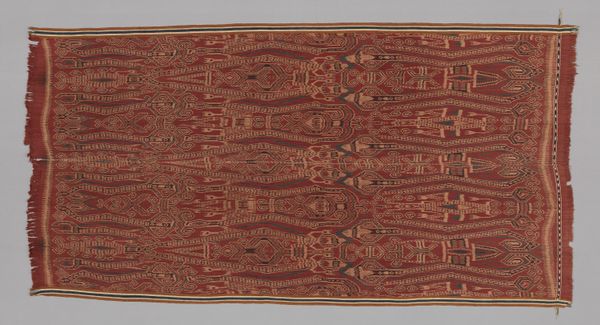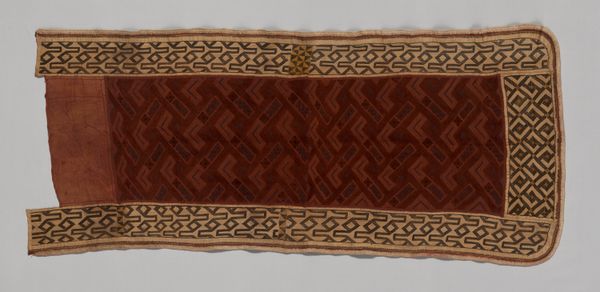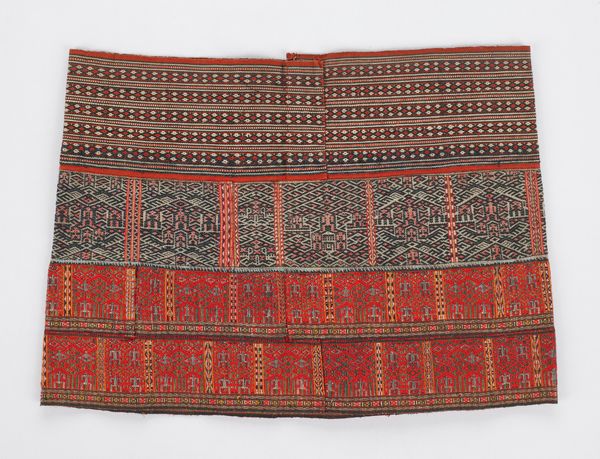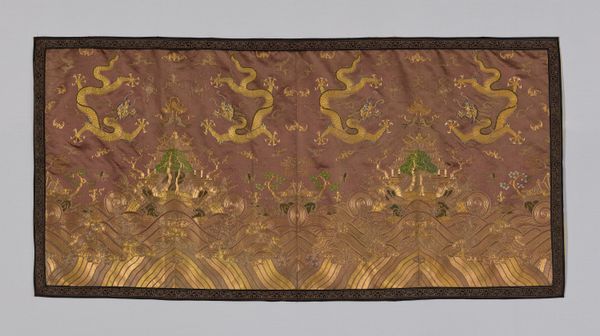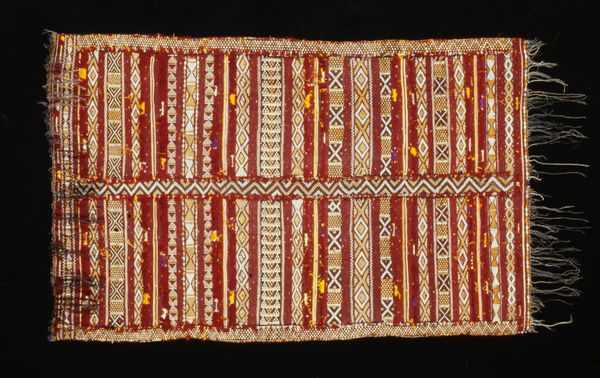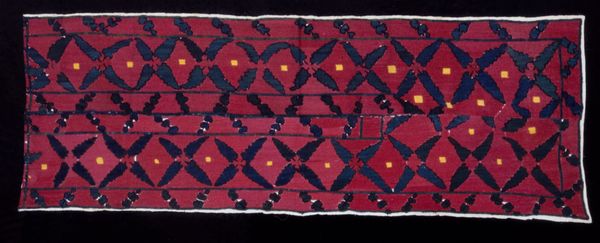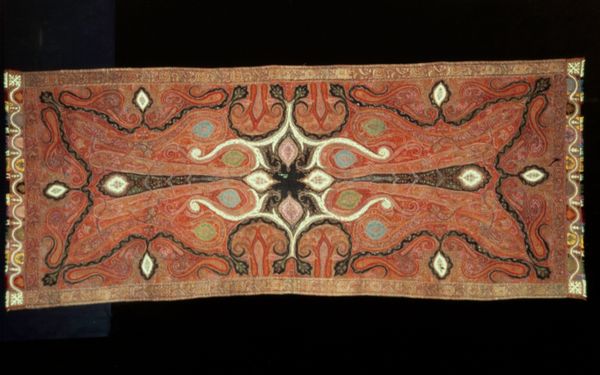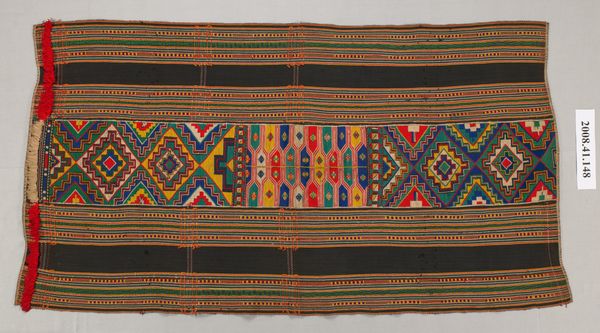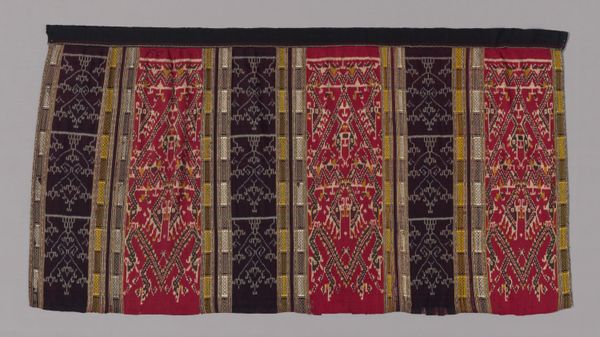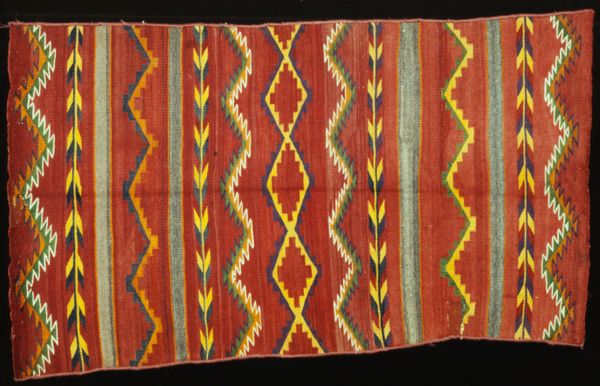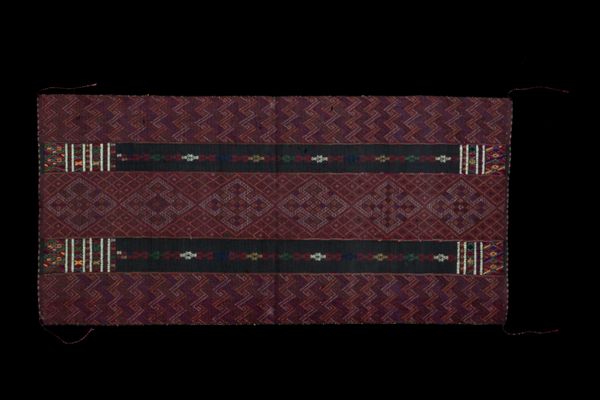
fibre-art, weaving, textile
#
fibre-art
#
weaving
#
textile
#
geometric
Dimensions: 177.8 × 89.8 cm (70 × 35 3/8 in.)
Copyright: Public Domain
Curator: What strikes me immediately about this textile is the feeling of deep history woven right into it. It speaks to tradition, resilience, and the enduring power of Indigenous visual language. Editor: My initial impression is one of texture and pattern. You can almost feel the weft and warp beneath your fingertips. The interplay of geometric forms really highlights the skill involved in creating this. Curator: Absolutely. What we're looking at is an Ikat-dyed blanket, crafted by the Iban people sometime between 1875 and 1900. Currently it resides here at The Art Institute of Chicago. Ikat refers to a dyeing technique where the threads are resist-dyed before weaving, creating intricate patterns. For the Iban, textiles are deeply connected to cosmology, social status, and ritual life. These cloths serve as potent symbols within their culture. Editor: It’s incredible to consider the labour involved. Ikat is an incredibly labour-intensive process, requiring careful planning and precise execution. And given its place within their traditions, can you expand on the social meaning of this piece? Was it just for ceremonial use? Curator: Beyond ceremony, textiles communicated much more. Certain motifs might indicate the wearer’s status, lineage, or even their role within specific rituals. Weaving was women's work, so their voices and knowledge were very closely entwined within its creation. Editor: Knowing that makes the textile resonate even deeper. It also challenges our contemporary notions about art-making. It wasn’t just individual expression, but deeply rooted in communal values, shared labour, and a rich understanding of available materials. Curator: Exactly. It underscores the power of textiles as visual carriers of knowledge and history. We see here a confluence of artistic skill, ritual meaning, and the representation of social relations. The red, especially, signifies blood, life force and strength. Editor: Considering the intricate, repetitive geometric motifs, and especially the materiality – the very fibers that make up this object—adds such depth of understanding to the experience of viewing it. Thanks for illuminating its cultural relevance! Curator: Indeed, by acknowledging the makers, we understand the histories that bind Indigenous art production to its social fabric. This piece urges us to engage with histories that Western art history often overlooks.
Comments
No comments
Be the first to comment and join the conversation on the ultimate creative platform.
